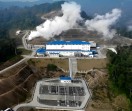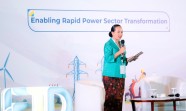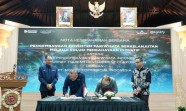Listrik Indonesia | Trieste, Italy — While many cities around the world are just beginning to map out their energy future, this charming port city in northeastern Italy is already miles ahead. Reporting from the second session of the Siemens Smart Infrastructure event held on June 12, 2025, Riki Ibrahim, Expert Board Member and Senior Journalist at Listrik Indonesia Magazine shared his latest field experience.
This time, he explored how Trieste has successfully developed an energy system that is not only smart, but also resilient, efficient, and sustainable. Located about a five-hour train ride from Milan, Trieste may lie on the edge of Italy, but it stands at the forefront of energy innovation.
Here, AcegasApsAmga a multi utility company under the Hera Group manages the city’s electrical system comprehensively, covering electricity, gas, clean water, waste management, and street lighting. These services are delivered in an integrated and professional manner.
But what truly sets AcegasApsAmga apart is not just the breadth of its services, but its vision. “They’re not just supplying energy they’re delivering the future,” Riki remarked.
A range of environmentally friendly projects including smart grid monitoring systems, energy efficiency programs, water recycling, and power saving technologies have been implemented with a clear focus on enhancing the quality of life for Trieste residents. 
Smart Grid in an Italian Port City
AcegasApsAmga has partnered with Siemens for over a century. This long-standing collaboration has resulted in a smart grid system that enables real-time energy monitoring and distribution. This system not only facilitates quick fault detection but also supports the integration of renewable energy sources like solar and wind into the grid.
“Smart grids make power management far more efficient. Consumption and distribution can be adjusted instantly even before a problem arises,” Riki explained.
He emphasized that this digital approach is the backbone of Trieste’s energy transition cutting operational costs, accelerating decarbonization, and enhancing system resilience.
Italy itself is undergoing a major energy transformation. The government is encouraging public and industrial involvement, making the transition not just a top-down initiative, but a grassroots movement. Riki observed that concrete actions taken by citizens and businesses to decarbonize infrastructure are clear signs that awareness of a low-carbon future is steadily growing.
Clean and Safe Infrastructure
One innovation highlighted during Riki’s visit was the use of Clean Air technology a natural gas alternative to SF6, traditionally used in medium-voltage switchgear. This environmentally friendly solution has been installed not only in Milan but also in Trieste. Known as one of the most potent greenhouse gases, replacing SF6 marks a significant step in Italy’s commitment to reducing emissions from the energy sector.
“Transitioning takes time and commitment,” Riki said. He stressed that government policy and customer demand are two key drivers behind the successful deployment of smart infrastructure. One future innovation under development is advanced energy storage technology like battery systems to meet growing demands for grid flexibility.
AcegasApsAmga isn’t solely focused on technology. The company also invests in the social and economic development of local communities. Through partnerships with social organizations and training programs, they promote social inclusion and economic empowerment. For Riki, this holistic approach is essential to building a truly sustainable city.
“Their principles are clear: autonomy, sustainability, and profitability,” he noted. Smart infrastructure isn’t just about wires and data it’s about the values it brings to communities through services, education, and opportunity.
.jpg)
The Future of Smart Cities
Beyond the power grid, the concept of smart buildings is also being widely adopted in Trieste. These buildings feature high energy efficiency, automated security systems, and enhanced comfort for occupants. Smart buildings are a key component of a smart city, supporting a lifestyle that is more efficient, safe, and connected.
For Riki, all of this offers valuable lessons. “If we want to emulate this, we shouldn’t just copy the technology we need to adopt the mindset and the collaboration behind it,” he said.
In Trieste, technology is merely a tool. What truly matters is how government, industry, and the public work together toward one goal: a greener, fairer, and smarter future.
Reflecting on his journey, Riki concluded with a powerful message: energy transformation is not a pipe dream. It requires willpower, collaboration, and above all, a bold vision. And in Trieste, Italy has shown that all of this can be achieved without losing the human touch.


.jpg)



,_yuliot_tanjung.jpeg)

.jpg)

.jpg)
